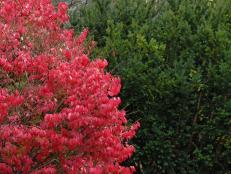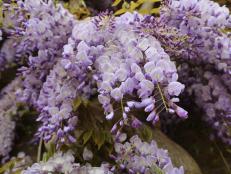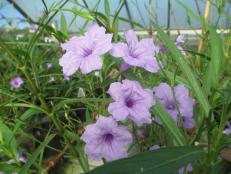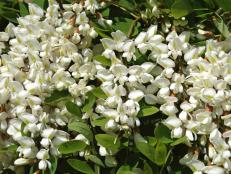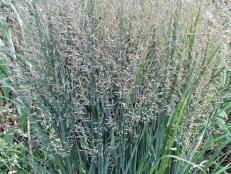Invasive Ornamental Grasses
Learn how to control these attractive, but potentially invasive, "bad guys" of the ornamental grass world.

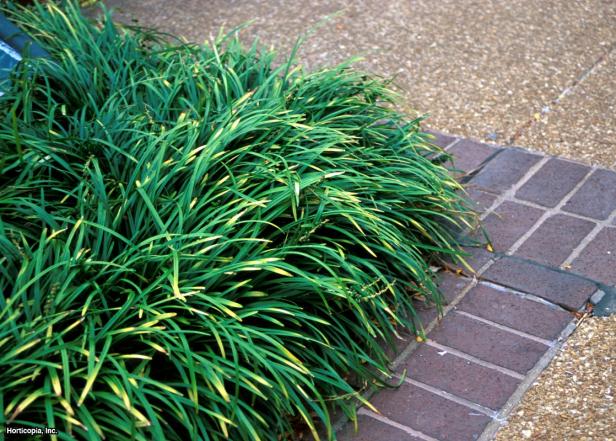
Ornamental grasses are beautiful in the landscape. Tall grasses sway in the wind, adding movement and sound as they softly rustle. Others produce seeds for hungry birds, bear colorful plumes or turn rich shades of gold, purple or red in the fall.
Grasses can shelter wildlife, brighten shady spots, lend height to borders and screen unwanted views.
But some of these good guys of the garden have a dark side, too. Some ornamental grasses can become invasive, crowding out native and cultivated plants.
Liriope spicata, also known as creeping lilyturf or monkeygrass, is a running form of liriope that can become a problem plant. Hardy in zones 4 to 10, it’s low-maintenance, tolerates full sun to part shade, and is often used as a dense groundcover or an edging for walkways and garden beds. It spreads easily—which is great if you’re on a gardening budget, but bad when it gets out of control. It’s so aggressive, it’s now considered an invasive in parts of the southeastern U.S.
Cornelius “Neil” Tarver, an agent for the University of Georgia’s Cooperative Extension Service, says he’s known gardeners who inadvertently bought L. spicata, thinking they were getting Liriope muscari. L. muscari spreads in clumps that grow bigger in diameter, but it doesn’t have L. spicata’s invasive runners.
L. muscari, which is usually hardy in zones 5 to 10, also grows easily in full sun to part shade. It produces violet-purple flowers held above strappy, green leaves in late summer. Later, the plants set blackish berries.
Tarver also says that giant reed grass, Arundo donax, “can be as invasive as bamboo. It’s an attractive, leafy grass and makes a good screen because it grows very tall and grows fast.” Unlike bamboo, giant reed grass dies back in winter, but it’s aggressive enough to overrun a large area in a single growing season, and when it escapes into nearby waterways, it can clog them and disrupt wildlife habitat.
“There’s a variegated variety which is less invasive,” Tarver adds, “because it spreads much more slowly. But it can eventually become a problem too.”
Of course, running bamboo itself is an invasive grass. Some types can grow more than three feet a day, with underground runners that extend 20 feet or more beyond the parent plant. Unless you have plenty of hungry pandas around, bamboo is almost impossible to eradicate. To control it, you’ll need to dig trenches and surround it with concrete, metal, or other barriers—and even those may not contain it. However, if you shop carefully, you can find forms of clumping bamboos that are suitable for growing in containers.
Other ornamental grasses to watch out for include:
- Pampas grass, Cortaderia selloana, is handsome but invasive, with sharp, grass-like foliage and large, feathery white or pinkish plumes. It’s a fast-grower, reaching up to 10 feet tall and wide. Hardy in zones 7 to 11, it may survive in zone 6 in a sheltered spot. If you want to prune or dig up this grass, beware of cutting yourself on it. Wear long-sleeves, long pants, gloves and protective eye gear.
- Japanese silvergrass, Miscanthus sinensis, also known as Chinese silvergrass or maiden grass, thrives in full sun and grows to 7 feet high and spreads 5 feet or more in diameter. Its feathery, silver or pink flowers appear from late summer into fall, held above long, arching foliage. You can find cultivars of this grass that bear few or no seeds (that is, they are considered sterile). But the wild form produces lots of fluffy seeds that spread on the wind, making the plants difficult to control, particularly in the South. Japanese silvergrass is hardy in zones 4 to 9.
- Fountain grass, Pennisetum setaceum, is a perennial grass native to Africa that grows 2 to 3 feet high and bears purple, pink or green flowers. Some nurseries sell varieties that are said to be sterile, but many still produce small amounts of seeds that can remain viable for several years. Fountain grass grows in thick stands, and it can crowd out native plants, divert free-flowing water, displace wildlife from their habitats and fuel raging wildfires with its dead foliage.
Before you plant an ornamental grass you’re unfamiliar with, make sure it’s not considered an invasive. A good source for this information is http://www.invasiveplantatlas.org/index.html. The USDA also maintains a database of undesirable plants at http://plants.usda.gov/java/.







